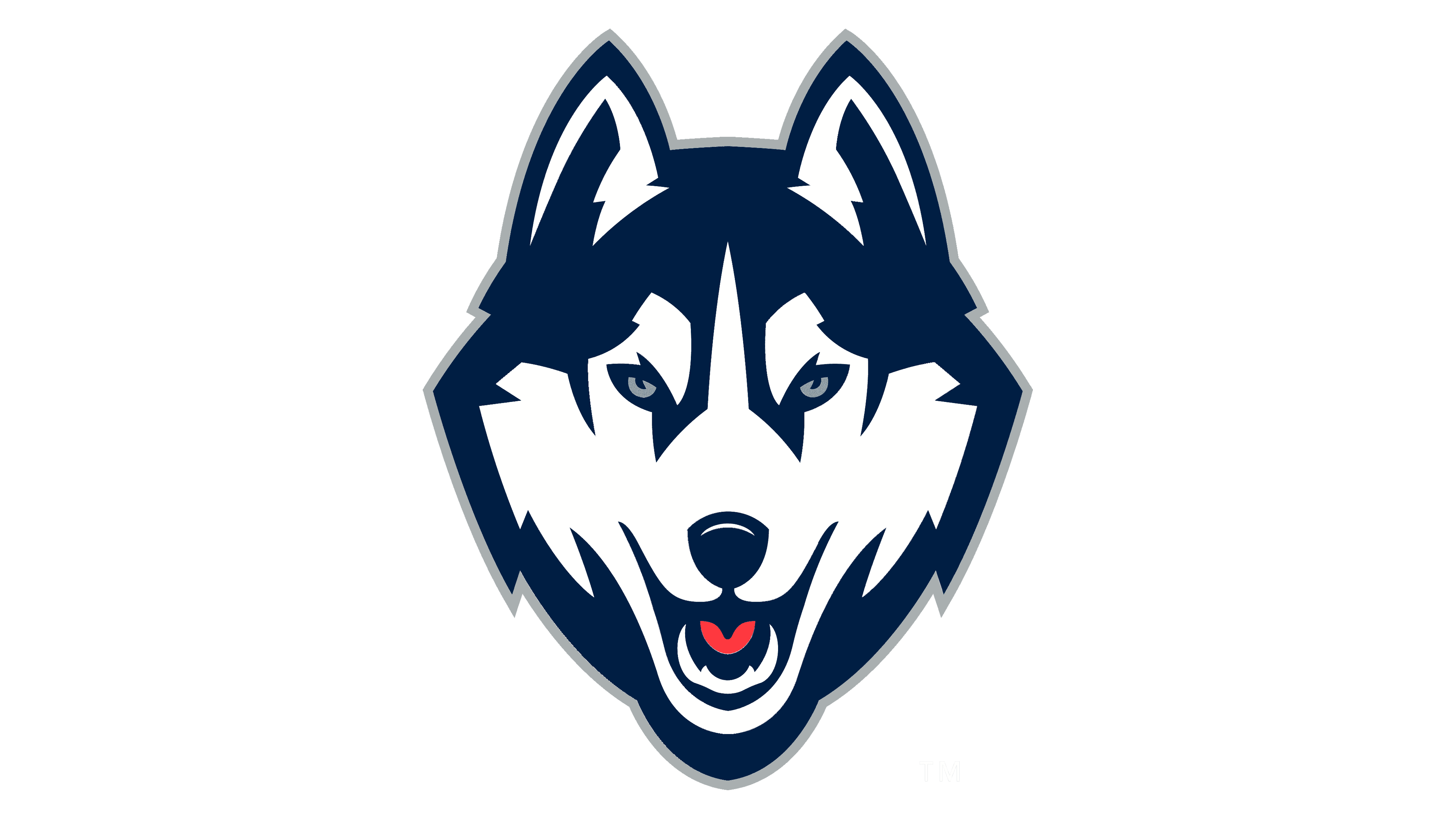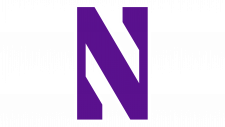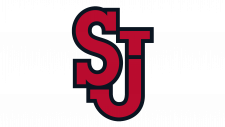UConn Huskies Logo
The University of Connecticut (UConn), a public research university, stands in Storrs, Connecticut. Founded in 1881, it’s renowned for strong programs in law, engineering, and business. UConn is part of the NCAA Division I and is famous for its successful basketball teams. The campus, blending historical and modern architecture, fosters a vibrant student life amidst lush greenery. Known for academic excellence and research innovation, UConn attracts students globally, enhancing its diverse and dynamic community.
Meaning and history
Founded in 1881 as a humble agricultural school through the generosity of Charles and Augustus Storrs, the University of Connecticut (UConn) has transformed remarkably over the decades. Originally aimed at providing practical education in agriculture and related fields, it gradually expanded its curriculum, mirroring the evolving educational landscape of the early 20th century.
By the 1930s, this institution had outgrown its original mission, prompting a rebranding to the University of Connecticut in 1939. This name change signified a broader academic purpose, encompassing arts, sciences, and professional studies.
During World War II, UConn played a pivotal role in supporting the war effort, adapting its academic focus towards military needs. The post-war era saw a boom in enrollment due to the GI Bill, catalyzing significant campus development and diversification of academic programs.
The late 20th century marked a period of dynamic growth and change. The establishment of professional schools in Law and Medicine in the 60s and 70s marked UConn’s foray into diverse academic disciplines. The UConn 2000 initiative, launched in the 1990s, was a turning point, channeling over a billion dollars into campus modernization and elevating the university’s academic profile.
In recent years, UConn has emerged as a center for innovative research, embracing sustainability and global outreach. Its sports teams, especially in basketball, have brought national recognition, building a strong sense of community.
UConn stands as a testament to its adaptive and progressive spirit, having transitioned from a local agricultural school to a globally respected university, continually striving for academic excellence and societal impact.
What is Uconn?
UConn, short for the University of Connecticut, is a distinguished public research university nestled in Storrs, Connecticut. It’s celebrated for its diverse academic offerings, ranging from arts to advanced sciences, and its athletic prowess, particularly in basketball. UConn embodies a blend of innovative research, rich history, and a vibrant campus life, attracting students from around the globe.
1959 – 1960
The logo is a stylized depiction of a canine’s profile, primarily in a bold, striking shade of blue. Its contours are sleek and smooth, delineating the head and snout with an economy of line, while sharp angles near the ears suggest alertness. The eyes of the creature are rendered with a minimalist approach, yet convey a sense of intelligence and intensity. The simplicity of the design allows for instant recognition, hinting at traits often associated with a husky such as resilience and strength. Notably, the design is devoid of any extraneous elements, focusing solely on the silhouette, which adds to its timeless and versatile appeal. This emblem is designed to encapsulate not just a team or an institution, but a spirit of tenacity and vigor.
1960 – 1970
The logo transitions from a minimalist profile to a full-bodied character, adopting a more elaborate and animated style. Here, a husky is personified, standing upright, garbed in what appears to be a Revolutionary-era outfit, including breeches and a tricorn hat marked with a prominent “U.” The husky wields a rifle, suggesting a readiness to lead and defend, with a bushy tail that complements its confident stance. This emblem exudes a historical charm, blending the university’s athletic spirit with a nod to a bygone era. The character’s friendly demeanor, emphasized by a wide grin and a jaunty pose, adds a welcoming yet formidable essence to the mascot, striking a balance between approachable and competitive. The shift from the abstract to the character-driven symbolizes a narrative rich in tradition and collegiate pride.
1970 – 1981
This iteration of the logo pivots back to a more naturalistic representation, focusing solely on the husky’s face. The mascot’s countenance is more detailed and textured, providing a sense of depth and realism. Its gaze is direct and filled with determination, a symbolic nod to the university’s focus on ambition and resilience. The use of bold lines to sculpt the fur conveys a sense of ruggedness and strength. The departure from anthropomorphic elements to a straightforward animal portrayal represents a return to the basics, emphasizing the husky’s intrinsic qualities over character attributes. The overall effect is one of a more mature and focused identity, aligning with an institution that values tradition, authenticity, and steadfastness.
1981 – 2002
This logo iteration introduces a dynamic circular backdrop, framing the husky’s face which now beams with a friendly demeanor. The addition of “CONNECTICUT HUSKIES” in bold, arched lettering above and beneath the husky’s portrait creates a cohesive and enclosed design, suggesting unity and completeness. The husky’s expression is softer, with a gentle smile, portraying a more welcoming and relatable image. The fur detailing remains intricate, suggesting texture and vitality. This design shift moves towards inclusivity and approachability while maintaining the essence of the husky’s characteristics of strength and endurance. The overall design now communicates not only the spirit of the sports teams it represents but also the broader, community-centric values of the institution.
2002 – 2010
In this evolution, the logo gains a contemporary edge with sharper graphics and a sleek design. The husky’s visage is now more stylized, with pronounced linework adding a dynamic, modern feel. A notable introduction of color with the tongue’s vivid red adds a playful touch to the otherwise monochrome palette. The text “CONNECTICUT HUSKIES” encircles the husky in a cohesive arch, maintaining a strong brand identity. The lettering is bolder and more defined, enhancing visibility and impact. This logo balances the husky’s inherent nobility with a fresh, energetic twist, reflecting a progressive institution that honors its past while looking to the future. The overall design presents a more assertive and spirited image, aligning with the university’s athletic and academic ambitions.
2010 – 2013
The logo maintains its core elements but enhances its three-dimensional effect with refined shadowing and highlights. The husky’s features are more pronounced, offering a striking visage that conveys a blend of friendliness and determination. The introduction of gray shades adds depth and a more lifelike quality to the husky’s fur. The color contrast is more pronounced, with the blue becoming deeper, enriching the overall visual appeal. The text encircling the husky is slightly adjusted for better symmetry and balance, creating a more harmonious and impactful design. These subtle but effective changes give the logo a modernized look, reflecting the evolution of the institution’s brand into one that is both contemporary and rooted in tradition.
2013 – Today
The latest rendition of the logo presents a stark transformation into a more minimalist and abstract design. The husky’s visage is sharper, with geometric lines and a penetrating gaze that conveys intensity and focus. Gone are the softer curves and friendly smile, replaced by stark contrasts and a more aggressive demeanor. The color scheme is streamlined, utilizing shades of blue with white accents to create a strong, contrasting image that stands out boldly. The red tongue remains as a singular splash of color, providing a visual anchor and a touch of vibrancy. This logo distills the essence of the husky into a few powerful elements, reflecting a modern, assertive identity that aligns with the university’s progressive ethos and competitive spirit.


















